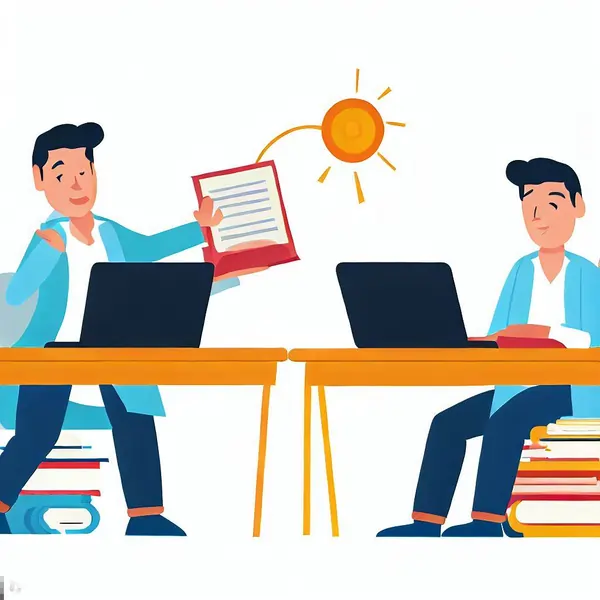As students and scholars, it is of utmost importance to uphold academic integrity and honesty, especially when you take your class. One of the most significant violations of academic integrity is plagiarism – the act of using someone else's work, ideas, or words without giving them proper credit. Plagiarism not only undermines the credibility of your academic work but also leads to severe consequences, including academic penalties and damage to your reputation.In this blog, we will explore the different aspects of plagiarism, understanding its implications on the academic community and individual learners. Plagiarism erodes the foundation of knowledge-sharing and deprives original authors of the recognition they deserve. Moreover, it hinders the development of critical thinking skills and intellectual growth for the plagiarizer.To avoid unintentional plagiarism, it is essential to grasp the various forms of this academic offense, such as copying verbatim, paraphrasing without proper citation, or self-plagiarism. Familiarizing oneself with citation styles, like APA, MLA, or Chicago, and diligently referencing sources used in the academic work can help prevent unintentional plagiarism. In addition to citing sources correctly, students should focus on developing their own ideas and interpretations.
What is Plagiarism?
Plagiarism is a multifaceted issue that encompasses a wide range of unethical practices involving the use of someone else's work without proper acknowledgment. Academic settings, including essays, research papers, assignments, and presentations, are particularly susceptible to plagiarism. Understanding the different forms of plagiarism is essential in addressing and preventing this academic misconduct.The most blatant type of plagiarism is direct copying, where a person reproduces someone else's work word-for-word without giving credit or permission. This is easily detectable and considered a severe offense in educational institutions.Another form is improper citation, where a person includes someone else's ideas, data, or content without providing accurate references or citations. Misleading or omitting citations can misrepresent the origin of the information and is also considered plagiarism.

Direct Plagiarism
Direct plagiarism involves word-for-word copying of someone else's work without attribution. This includes lifting sentences, paragraphs, or entire passages from sources without using quotation marks and proper citation. It is the most obvious form of plagiarism and is strictly prohibited in academia.
Self-Plagiarism
Self-plagiarism occurs when a student submits their own previous work for a new assignment without proper acknowledgment. While it may seem harmless, reusing your own work without permission can mislead instructors and compromise the originality of new assignments.
Mosaic Plagiarism
Mosaic plagiarism, also known as "patchwriting," involves copying and pasting from multiple sources and then attempting to rephrase or blend the material together. Despite the intention to paraphrase, this practice still counts as plagiarism as it fails to acknowledge the original authors properly.
Consequences of Plagiarism
Plagiarism, an act of presenting someone else's work or ideas as one's own, can have profound consequences that students must be aware of. Firstly, in the academic realm, plagiarism can lead to severe penalties such as failing grades, academic probation, or even expulsion from educational institutions. Educational integrity is fundamental to the learning process, and when students engage in plagiarism, it undermines the trust between educators and learners, devaluing the education received.Moreover, the effects extend beyond the academic sphere and can impact a student's future professional endeavors. Employers value integrity and ethical conduct, and a plagiarism record can tarnish a student's reputation, making it difficult to secure job opportunities. Additionally, with the increasing use of plagiarism detection software, employers are cautious about hiring individuals with a history of academic dishonesty.Furthermore, the long-term psychological effects of plagiarism should not be underestimated. Guilt, shame, and a diminished sense of accomplishment can arise, affecting a student's self-esteem and motivation.
Academic Penalties
Most educational institutions have strict policies against plagiarism. If caught, students may face a range of penalties, including failing the assignment, receiving a failing grade for the course, or even academic suspension or expulsion in severe cases.These may include failing the assignment, receiving a failing grade for the course, or, in more extreme cases, academic suspension or expulsion.
Legal Ramifications
In some instances, plagiarism can lead to legal consequences, especially if copyrighted material is used without proper permission or attribution. This may result in lawsuits and financial liabilities.In such cases, students may find themselves embroiled in lawsuits and facing significant financial liabilities.
Damage to Reputation
Plagiarism can tarnish a student's reputation within the academic community and among peers. Additionally, it can impact future career prospects as employers value integrity and ethical behavior in their employees.Furthermore, as they enter the job market, potential employers highly value integrity and ethical behavior, making a stained reputation a significant hindrance to future career prospects.
How to Avoid Plagiarism
In the pursuit of maintaining academic integrity and ensuring originality, students can adopt various effective strategies to avoid plagiarism. Firstly, it is crucial to develop a strong understanding of what constitutes plagiarism and acknowledge its consequences. This awareness serves as a foundation for ethical academic conduct.One of the primary steps to steer clear of plagiarism is to attribute all sources properly. When incorporating ideas, quotes, or paraphrasing from external works, students must diligently cite the original authors using the appropriate citation style recommended by their institution.Moreover, time management plays a crucial role in plagiarism prevention. By planning ahead and organizing their research and writing process, students can avoid the last-minute rush that often leads to accidental plagiarism due to poor citation or rushed paraphrasing.Furthermore, enhancing one's note-taking skills can be immensely beneficial. By jotting down notes and summarizing information in their own words during research, students are less likely to copy-paste directly from sources, thereby reducing the risk of unintentional plagiarism.
Engaging in peer discussions and seeking feedback from teachers or mentors can also contribute to avoiding plagiarism. Constructive critiques can help students improve their writing and referencing skills while gaining a better understanding of originality.
Start Early and Plan Your Work
One of the main reasons students resort to plagiarism is time pressure and poor planning. Starting your assignments early and creating a detailed plan can give you ample time to conduct proper research and write your paper from scratch.
Use Citations and References
Whenever you use someone else's ideas or words, make sure to provide proper citations and references. Different citation styles like APA, MLA, or Chicago have specific guidelines for citing sources. Familiarize yourself with the appropriate style for your assignment and use it consistently.
Quote and Paraphrase Correctly
If you want to include a direct quote, enclose it in quotation marks and attribute it to the original author. For paraphrased content, reword the information significantly and provide a citation. Remember that paraphrasing is not a mere word swap; it involves expressing the idea in your own words.
Tools to Detect Plagiarism
In the academic world, maintaining integrity and originality in one's work is of paramount importance. To address the concern of plagiarism, institutions and instructors have turned to various plagiarism detection tools. These tools play a crucial role in upholding academic honesty and ensuring that students submit authentic and properly referenced assignments.By using plagiarism detection tools, students can conduct self-assessments of their work before submitting it for evaluation. These tools scan the content and compare it against a vast database of existing texts, academic papers, and publications. Any similarities or matches found are highlighted, allowing students to review and make necessary adjustments to their work to ensure it meets the required standards of originality.
The benefits of utilizing plagiarism detection tools extend beyond just avoiding potential penalties for plagiarism. These tools serve as valuable educational resources by raising awareness about proper citation practices and the importance of giving credit to the original authors. Through regular use of such tools, students can enhance their writing skills and develop a deeper understanding of academic integrity.
Turnitin
Turnitin is one of the most widely used plagiarism detection tools. Many educational institutions have integrated Turnitin into their systems to compare students' work against a vast database of academic and online content.By integrating Turnitin into their systems, educators and administrators can effectively compare students' work against an extensive database comprising academic papers and online content, thereby identifying potential instances of plagiarism.
Grammarly
Grammarly, a popular writing assistant, also provides a plagiarism checker feature. It highlights potential instances of plagiarism and offers suggestions for proper citation and paraphrasing.Additionally, Grammarly provides valuable suggestions for proper citation and paraphrasing, encouraging writers to maintain academic integrity.
Copyscape
Copyscape is primarily used for website content, but it can also be handy for students to check if their work matches any existing online content.With Copyscape, students can cross-check their written assignments or research papers against existing online content to ensure originality and prevent unintentional plagiarism.
Conclusion
The importance of upholding academic integrity cannot be emphasized enough for both students and academic professionals. Plagiarism poses a significant threat to one's educational progress, and it also undermines the very essence of learning and the spirit of sharing knowledge. To combat this issue, it is essential to have a clear understanding of what plagiarism entails and the severe consequences it carries. By adopting proper citation practices and crediting the original sources, we can foster a culture of honesty and authenticity in academic pursuits. It is crucial to recognize that attributing the work of others not only safeguards us from the dire consequences of plagiarism but also reinforces the sense of belonging to an intellectual community. Let us all commit ourselves to creating scholarly works that reflect our genuine insights, ideas, and ingenuity. By doing so, we not only protect our academic standing but also contribute to the growth and enrichment of the academic world as a whole. Together, we can build a future built on the foundations of honesty, integrity, and originality.
